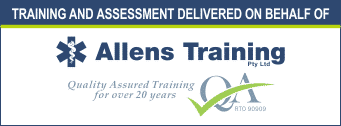What is Shock?
Shock is a critical condition that occurs when the body isn’t getting enough blood flow. Without enough blood flow, cells and organs do not receive enough oxygen and nutrients to function properly. This can lead to serious complications if not treated promptly. In this article we’ll chat about how you can identify and help with shock.
Causes of Shock
Shock can be caused by a variety of situations, such as:
- Severe Injury: Major trauma or injury, especially with significant blood loss or pain.
- Heart Problems: Conditions like heart attacks can impair the heart’s ability to pump blood effectively.
- Infections: Severe infections (septic shock) can cause blood vessels to leak, leading to a drop in blood pressure.
- Allergic Reactions: Severe allergic reactions (anaphylaxis) can cause widespread blood vessel dilation and fluid leakage.
- Dehydration: Severe dehydration can reduce blood volume and cause shock. Excessive sweating may cause dehydration.
- Diarrhoea and vomiting: severe or prolonged diarrhoea or vomiting may lead to shock.
- Burns or scalds: severe burns or scalds can cause dehydration, pain and distress.
Immediate first aid for shock is crucial to prevent the condition from worsening and causing irreversible damage.
Signs and Symptoms of Shock
Recognising the signs and symptoms of shock early can make a considerable difference in the outcome for the affected person. Signs and symptoms may vary widely depending on the underlying cause of the shock. Here are some key indicators:
Physical Signs
- Pale, Cool, Clammy Skin: The skin may become pale, cool, and clammy to the touch due to reduced blood flow.
- Rapid Pulse: The heart may beat faster to try and maintain blood pressure.
- Altered Breathing: Breathing may become quick and shallow as the body tries to get more oxygen.
- Deteriorating Level of Consciousness: As the condition worsens, the person may become sleepy and difficult to rouse.

Behavioural Changes
- Confusion and Agitation: The person may seem disoriented or have trouble concentrating.
- Anxiety: They might feel anxious or agitated without a clear reason.
- Weakness: General weakness and fatigue are common as the body’s systems start to shut down.
- Dizziness: Feeling unsteady, faint or woozy, especially if the person continues to stand or sit upright.
- Thirst: The person may feel very thirsty (avoid giving them anything to drink though).
- Nausea: They may report ‘feeling sick’ with or without vomiting.
Severity
Symptoms can vary depending on the severity of the shock. In more severe cases, the person may become unresponsive or lose consciousness. It’s important to monitor their condition closely and be prepared to act quickly.

How to Manage Shock
Knowing how to respond to someone in shock can save lives. Here’s a detailed, step-by-step guide on what to do:
Immediate Actions
Follow the DRSABCD Action Plan
The DRSABCD action plan is a fundamental part of first aid and helps ensure a systematic response to emergencies:
- Danger: Ensure the area is safe for yourself, the patient, and others.
- Response: Check for a response from the person by asking questions and gently shaking their shoulders.
- Send for Help: Call emergency services immediately if the person is unresponsive or if you suspect shock. Early professional intervention is crucial.
- Airway: Ensure the person’s airway is clear. If they are unconscious, tilt their head back and lift their chin to open the airway.
- Breathing: Check for normal breathing. If they are not breathing normally, start CPR.
- CPR: If necessary, commence CPR (30 chest compressions followed by 2 breaths).
- Defibrillation: Use an automated external defibrillator (AED) if available and follow the prompts.
Lie the Person Down
- Conscious Person: Help the person lie down on their back. Elevating their legs (passive leg raise) may help improve circulation briefly. According to the Australian Resuscitation Council guidelines, this positioning should only be used if there is no other obvious trauma.
- Unconscious Person: If the person becomes unconscious, place them in the recovery position (side-lying). This helps keep the airway open and allows any fluids to drain from the mouth, reducing the risk of choking.

Control Any Bleeding
- Direct Pressure: Apply direct pressure to any bleeding wounds with a clean cloth or bandage.
- Elevation: Elevate the bleeding part if it does not cause further injury.
- Bandaging: Secure the dressing with a bandage to maintain pressure on the wound.
Keep Them Warm
- Cover Them: Use a blanket, coat, or any available material to cover the person. Maintaining body temperature is crucial because shock can cause a drop in body temperature, which can further complicate the condition.
- Avoid Overheating: While it’s important to keep them warm, avoid excessive heating like hot water bottles, which could cause burns or overheating.

Stay Calm and Reassuring
- Provide Comfort: Talk to the person calmly and reassuringly. Let them know help is on the way and that they are not alone.
- Minimise Movement: Encourage the person to stay still to prevent further injury and reduce stress.
When to Call for Help
Knowing when to seek professional medical help is crucial. Call emergency services if:
- Unresponsiveness: The person becomes unresponsive or loses consciousness.
- Condition Worsens: The person’s condition deteriorates or symptoms of shock become more severe.
- Unable to Manage: You feel unable to manage the situation on your own.
By following these steps and the DRSABCD action plan, you can provide effective first aid for someone in shock and potentially save their life.
Get First Aid Trained
Knowing how to manage shock and other emergencies is invaluable. First aid training equips you with the skills and confidence to act quickly and effectively.
Benefits
- Preparedness: Be ready to handle emergencies calmly and efficiently.
- Confidence: Gain the confidence to provide assistance without hesitation.
- Life-Saving Skills: Learn techniques that can make a real difference in critical situations.
At My First Aid Course Brisbane, we offer a variety of first aid training programs tailored to meet different needs. Whether you’re a complete beginner or looking to refresh your skills, our courses are designed to provide comprehensive, practical training delivered by experienced professionals. Our nationally recognised training ensures that your skills are valid across Australia.
Don’t wait for an emergency to realise the importance of first aid training. Enrol in one of our courses today and be prepared to save a life. Visit our website to find the course that best suits your needs and schedule.






